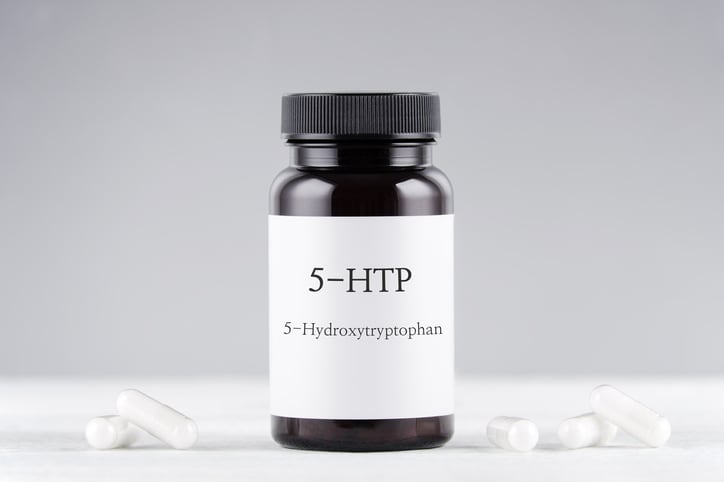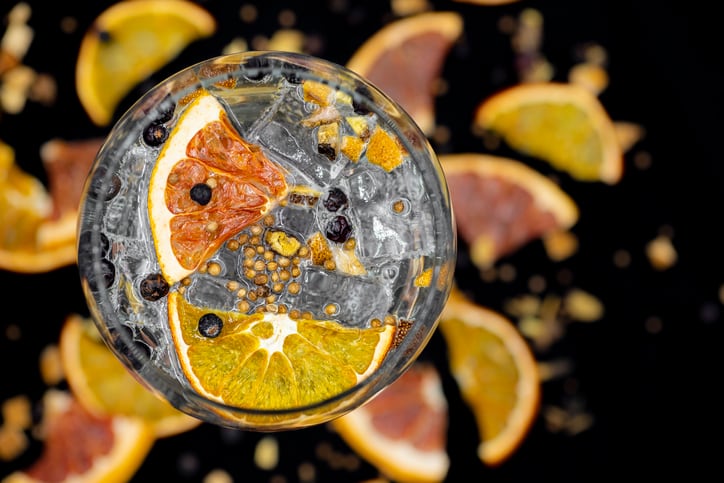Griffonia simplicifolia is a climbing vine of the lily family. It is native to forest habitats in several West African countries, with the largest supplies coming out of Ghana. The seed pods of the plant are harvested and exported to foreign processors who extract 5-HTP from the seeds.
5-HTP (5-hydroxytryptophan) is a naturally occurring amino acid that is part of the pathway for the synthesis of the neurotransmitter serotonin. As such, the ingredient has been used for years in products aimed at mood support, specifically for consumers seeking help with depression or anxiety symptoms.
Demand increasing for ingredient
Demand for the ingredient has increased in the past year, though not as much as have some supplement categories, said Dan Richard, vice president of sales and marketing for supplement manufacturer NOW Health Group.
“As perhaps the largest seller of 5-HTP in the US, NOW has seen steady and sustained sales growth of 5-HTP. Sales in 2021 continue to grow above 2020 levels, so 5-HTP is a fairly large category itself. Covid-related growth did not jump like Elderberry, Vitamin D or other immune products, but NOW felt a noticeable lift in sales that continues today. Other mood support supplements such as Ashwagandha, Theanine, St. John’s Wort, and Dopa Mucuna have also bumped up in sales, although hard to tell if that’s part of overall supplement lift or specific to pandemic mood needs,” Richard said.
That demand increase comes on top of a rising interest in the ingredient that spans a number of years. The authors of a recent paper publish online ahead of print in the Journal of Ethnopharmacology looked into whether that demand is starting to put an inordinate strain on supplies of raw material, which is still exclusively wildcrafted.
Plant not in immediate danger
The good news, said co author Josef Brinckmann, a research fellow with the firm Traditional Medicinals, is that no evidence was found of an immediate supply concern.
“We did not conclude or recommend that the species should be consider for protection measures,” Brinckmann told NutraIngredients-USA. “We didn’t suggest that it be admitted to Appendix 2 of CITIES, for example.” (CITIES stands for Convention in International Trade in Endangered Species.)
“What we did suggest is that there is more to learn here,” he said.
The paper’s authors noted that the plant itself has been much studied, with over 1,000 papers dedicated to it. But there is insufficient information in how trade in the plant and harvesting practices are affecting both supplies and quality of the raw material.
While it thrives in an undisturbed forest environment, the plant is also found in second growth, degraded forest habitats and can even grow out in the open. But there is not a lot of information about the relative productivity of the seeds in those different environments, nor of the concentration of bioactives in the seeds in those different scenarios.
The authors found at least some examples of seed pods collected in these subsidiary environments that had few seeds inside them. G. simplicifolia seeds are large, almost bean like, and a typical pod contains four such seeds. The mostly empty pods observed in some plants was attributed to possible pollination failure.
Questions about pollination, harvesting practices
That raised another point about the plant that is insufficiently understood. It’s still not clear which animal species are primarily responsible for pollinating the plant, and whether it’s one species or several.
Two West African bird species are prime candidates, the Yellow Rumped Tinker Barbet and the Collared Sunbird. While both species are officially listed as ‘Least Concern’ by the International Union for the Conservation of Nature, the paper’s authors noted that understory bird populations in Ghana have declined by 50% or more overall in recent years as the rate of deforestation continues to accelerate.
The authors also noted that more information is also needed about harvesting practices. Some harvesters simply chop branches to get at the seed pods rather than taking the time to climb to pick individual pods. While the plants generally resprout vigorously, the impact of such practices on the plants’ productivity over time is not known.
The paper also voiced concern for the future of the trade as it relates to local economies. If wild supplies are not managed effectively, eventually the price could rise to the point that synthesized versions of the ingredient could become cost effective, which could harm the livelihoods of thousands of harvesters in the region.
Time growing short for formulating management strategy
Putting it all together, the authors said the time is now to assemble the information needed to properly manage the supply chain before it might be too late.
“The annual bulk G. simplicifolia seed extract market is worth between US$ 31.7 million - 100 million, with demand growing at 7% per year. Meeting this demand requires the ‘human predation’ of an average of 616.67 tonnes of seeds per year (or 1–1.5 billion seeds/year) exported from Ghana. In addition, rapid deforestation rates in exporting countries in West Africa are of concern, as are other interacting factors on wild G. simplicifolia population dynamics. If supply chains from wild stocks are to be sustained, we recommend improved resource management that is informed by studies of G. simplicifolia pollination ecology, Integral Projection Models (IPM) and improved monitoring of international trade,” they concluded.
Source: Journal of Ethnopharmacology
278 (2021) 114202. Epub ahead of print
From forest to pharmacy: Should we be depressed about a sustainable Griffonia simplicifolia (Fabaceae) seed supply chain?
Authors: Cunningham AB, Brinckmann JA, Harter DEV


